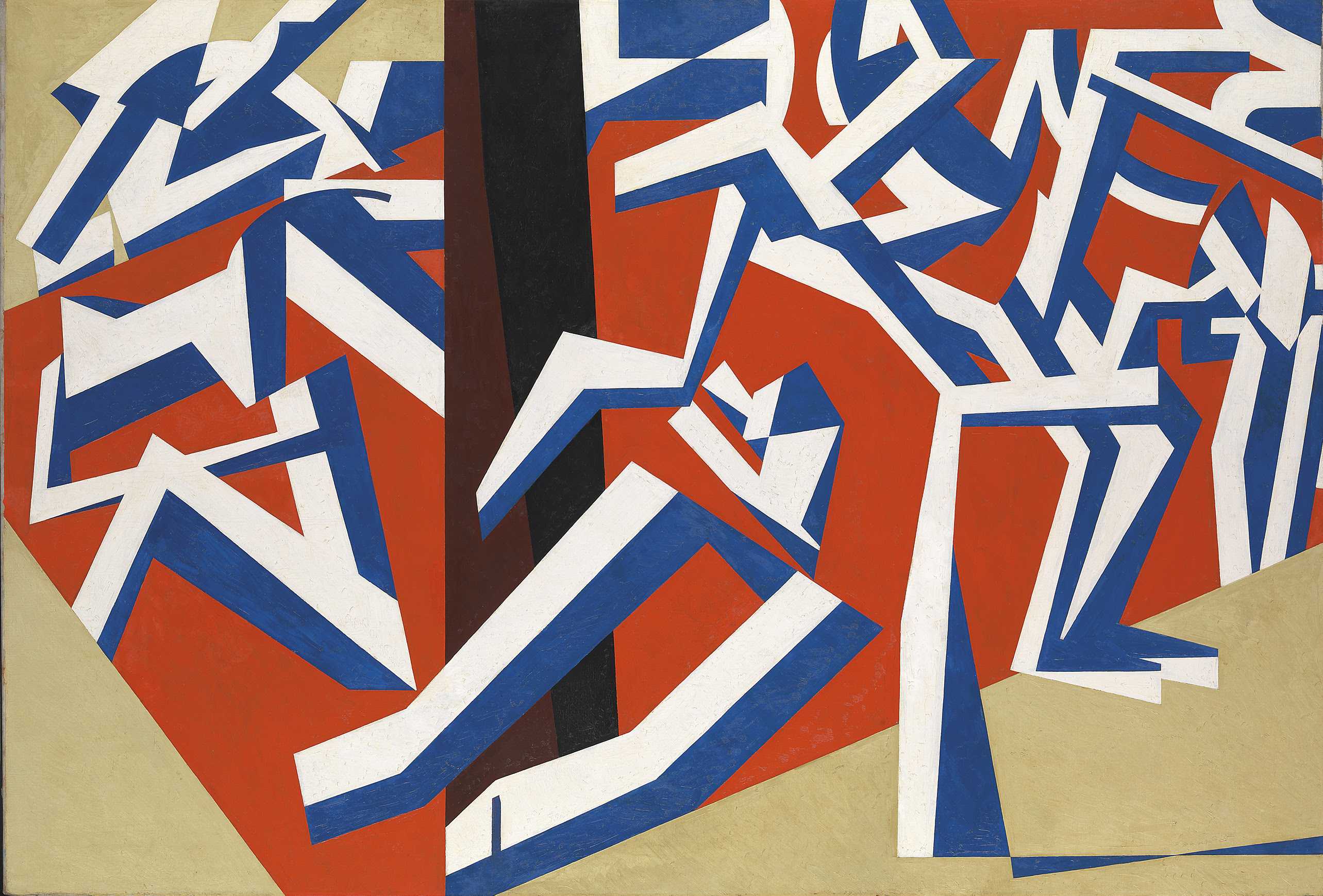Nine outstanding works of Bomberg (1890–1957) together with paintings from the National Gallery which inspired him as a young radical growing up in London’s East End make up this fascinating exhibition.
Young Bomberg and the Old Masters includes nine outstanding works of Bomberg (1890–1957) together with paintings from the National Gallery which inspired him as a young radical growing up in London’s East End. They include Botticelli’s Portrait of a Young Man (painted around 1480-5) and Studio of El Greco’s The Agony in the Garden of Gethsemane (1590s).
These are being displayed next door to Bomberg’s monumental masterpiece The Mud Bath (1914, Tate), which he painted when he was only 23 years old. It echoes Michelangelo’s The Entombment (circa 1500–1) in its composition and energy. Other works by Bomberg include the dramatic Vision of Ezekiel (1912, Tate), inspired by the sudden death of his beloved mother, Rebecca and the theme of the resurrection in the Old Testament; Ju-Jitsu (c.1913, Tate), a geometrical and fractured painting based on his brother’s East End gym; and the spectacular In the Hold (c.1913–14, Tate), where dockers appear to be unloading migrant adults and children from a ship. These Bomberg paintings are accompanied by their preparatory drawings as well as his bold Self Portrait (1913–14, The National Portrait Gallery) and the highly controversial first version of his war painting Sappers at Work: A Canadian Tunnelling Company, Hill 60, St Eloi (c.1918-19, Tate).
The exhibition is curated by art critic and historian Richard Cork, who draws illuminating parallels between Bomberg’s early works and other National Gallery paintings which probably influenced his compositions. The exhibition shows how Bomberg embraced the art of the past in order to contribute to early 20th-century Modernism at its most audacious.
Recognised in 1914 as one of the most daring and original painters of his generation, Bomberg pushed his youthful art to its limits. While these works break away from tradition and show a strong dedication to avant-garde renewal, he later developed a more figurative style, rediscovering nature and making every effort to encapsulate its essential vulnerability. This progression in style is was the result of his disillusionment with the modern world and the devastating violence of the machine age. Bomberg’s harrowing experiences in the trenches during the First World War – where he lost his brother and several close friends – profoundly changed his outlook on the world.
His early works gain their immense vigour from a fascinating paradox: while he was radically rejecting the traditional vision which overwhelmed many of his contemporaries, he was at the same taking inspiration from the Old Masters whose art he admired and had assiduously copied as a teenager. Rather than imitating his favourite artists, like Botticelli and Michelangelo, he analysed and studied them closely in order to achieve his own audacious renewal.
- Monday:
-
10:00 - 18:00
- Tuesday:
-
10:00 - 18:00
- Wednesday:
-
10:00 - 18:00
- Thursday:
-
10:00 - 18:00
- Friday:
-
10:00 - 21:00
- Saturday:
-
10:00 - 18:00
- Sunday:
-
10:00 - 18:00

